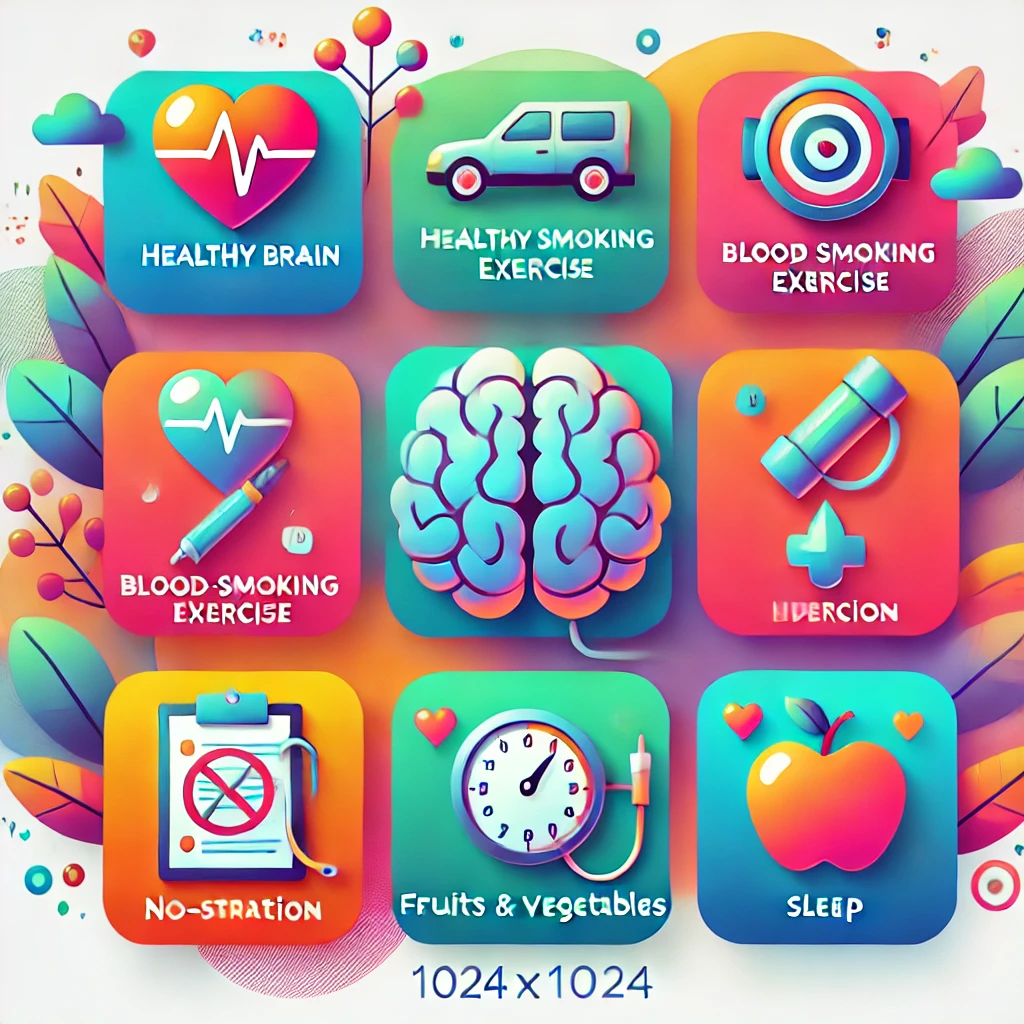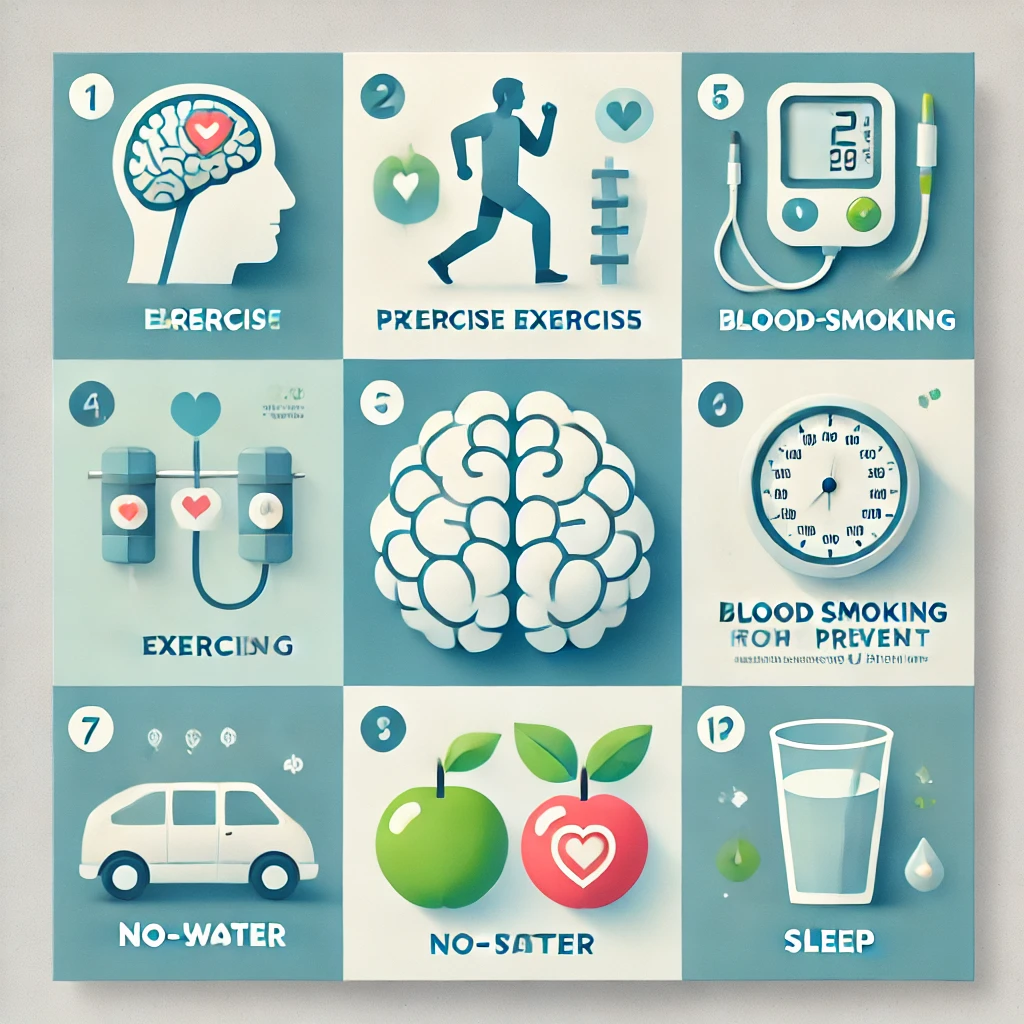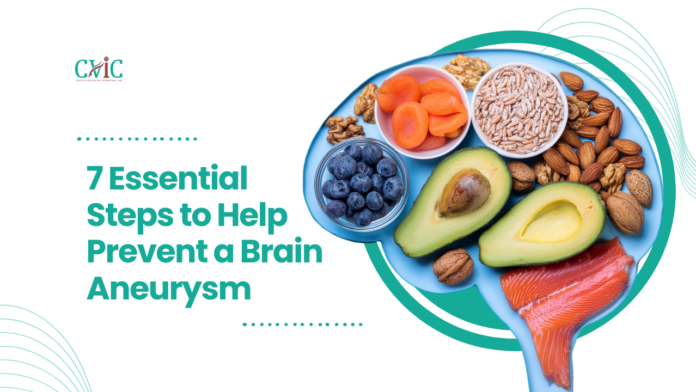What is a Brain Aneurysm?
A brain aneurysm is a weak spot in a blood vessel in the brain that bulges out and fills with blood. If it ruptures, it can lead to a life-threatening type of stroke known as a subarachnoid hemorrhage. While not all aneurysms burst, a ruptured aneurysm can cause serious complications, including brain damage and even death.
Table of Contents:
- What is a Brain Aneurysm?
- Common Risk Factors for Brain Aneurysms
- Can You Prevent a Brain Aneurysm?
- Step 1: Control Blood Pressure
- Step 2: Quit Smoking
- Step 3: Maintain a Healthy Diet
- Step 4: Regular Physical Activity
- Step 5: Moderate Alcohol Consumption
- Step 6: Manage Stress and Anxiety
- Step 7: Regular Health Screenings
- FAQs
- Conclusion
Common Risk Factors for Brain Aneurysms
Certain factors increase the likelihood of developing a brain aneurysm. These include:
- Family history: Genetics play a role, especially if close relatives have had aneurysms.
- Age and gender: Older adults and women are at slightly higher risk.
- High blood pressure: Elevated blood pressure can weaken blood vessel walls.
- Smoking: A major risk factor due to its effect on blood vessels.
- Substance abuse: Cocaine or amphetamines can increase blood pressure and stress on arteries.
Can You Prevent a Brain Aneurysm?
Although you can’t entirely eliminate the risk, taking proactive steps can significantly reduce your chances of developing a brain aneurysm. By managing lifestyle factors, addressing health conditions, and monitoring your vascular health, you can help keep your brain’s blood vessels healthy.
Also Read: 10 Essential Lifestyle Changes After a Stroke for a Healthier Recovery

Control Blood Pressure
High blood pressure, or hypertension, is one of the primary contributors to brain aneurysms. Blood pressure management involves several lifestyle adjustments:
- Reduce salt intake: High sodium levels contribute to high blood pressure.
- Eat potassium-rich foods: Foods like bananas, spinach, and oranges can help balance sodium levels.
- Limit caffeine: Too much caffeine can raise blood pressure and stress the vascular system.
- Stay hydrated: Dehydration can increase blood pressure, so aim for plenty of water each day.
Regular monitoring is essential, especially if you have a family history of hypertension. Working with your doctor can help you establish an effective management plan that may include medications, lifestyle changes, or both.
Quit Smoking
Smoking greatly increases the risk of a brain aneurysm. The chemicals in tobacco smoke damage blood vessel walls, making them more prone to weakness and, eventually, aneurysms. By quitting smoking, you give your body the chance to repair itself.
- Consider nicotine replacement therapies: Options like patches or gum can help with cravings.
- Seek support groups or counseling: Programs like Quitline offer free support and resources.
- Avoid smoking triggers: Identifying situations or habits that lead to smoking can help you stay on track.
Quitting smoking not only lowers the risk of a brain aneurysm but also improves overall health.
Maintain a Healthy Diet
Eating a diet rich in fruits, vegetables, lean proteins, and whole grains can help maintain good vascular health, reduce cholesterol, and support healthy blood pressure levels.
- Focus on whole foods: Minimally processed foods contain less added sodium and unhealthy fats.
- Limit saturated fats: Foods high in saturated fats can raise cholesterol, which harms blood vessels.
- Include Omega-3 fatty acids: Found in fish like salmon and mackerel, these fats support cardiovascular health and can help reduce inflammation.
Additionally, maintaining a balanced diet helps you control your weight, which is another factor in preventing a brain aneurysm.
Also Read: Top 7 Lifestyle Changes That Complement Stroke Medications for Better Recovery

Regular Physical Activity
Exercise strengthens the heart, lowers blood pressure, and improves circulation. Regular aerobic activities like walking, swimming, and cycling can help:
- Improve vascular health: Exercise keeps blood vessels flexible, reducing the likelihood of damage.
- Lower stress levels: Physical activity releases endorphins, which naturally reduce stress.
- Maintain a healthy weight: Being overweight can increase blood pressure, so regular exercise is key to prevention.
Aim for at least 150 minutes of moderate-intensity exercise per week, along with strength training twice a week for optimal benefits.
Moderate Alcohol Consumption
While moderate alcohol consumption has certain health benefits, excessive drinking puts undue strain on blood vessels and can contribute to high blood pressure.
- Limit intake: Stick to recommended guidelines—up to one drink per day for women and two for men.
- Choose heart-healthy options: Red wine, in moderation, has been shown to support vascular health due to antioxidants like resveratrol.
- Avoid binge drinking: Large quantities of alcohol in a short time can sharply increase blood pressure and weaken blood vessels.
Manage Stress and Anxiety
Chronic stress and anxiety lead to long-term increases in blood pressure and can affect vascular health. To manage stress:
- Practice mindfulness and meditation: These techniques can lower blood pressure and reduce tension.
- Engage in relaxing activities: Hobbies, time in nature, or simply enjoying music can help calm the mind.
- Consider therapy: Speaking with a mental health professional can provide tools to manage stress and anxiety more effectively.
Lowering stress is beneficial not only for preventing a brain aneurysm but also for enhancing overall well-being.
Also Read: What Conditions Does an Endovascular Surgeon Treat?

Regular Health Screenings
Routine health check-ups are crucial to monitor conditions that could contribute to an aneurysm, like high blood pressure or high cholesterol. Screenings may include:
- Blood pressure checks: Regular monitoring helps you address hypertension early.
- Cholesterol tests: High cholesterol can damage blood vessels, so testing and management are essential.
- Aneurysm screenings for high-risk individuals: For those with a family history or other risk factors, specialized screening can detect early signs of aneurysms.
FAQs
What are the early signs of a brain aneurysm?
Most unruptured brain aneurysms have no symptoms, but large aneurysms can cause headaches, vision changes, or neck pain. Ruptured aneurysms, however, often cause a sudden severe headache, vision loss, or fainting, and require emergency care.
Is brain aneurysm preventable?
While you cannot entirely prevent a brain aneurysm, managing risk factors such as high blood pressure, smoking, and unhealthy lifestyle habits can reduce your risk.
Can stress cause a brain aneurysm?
Chronic stress can raise blood pressure and increase the strain on blood vessels, potentially heightening the risk of an aneurysm.
Are there foods that help prevent a brain aneurysm?
A balanced diet rich in fruits, vegetables, lean proteins, and whole grains supports vascular health and helps control risk factors associated with brain aneurysms.
How does exercise help in preventing brain aneurysms?
Regular exercise strengthens the heart, lowers blood pressure, and improves circulation, which can reduce the risk of brain aneurysms.
Should I get screened for a brain aneurysm?
If you have a family history of aneurysms or other risk factors, speak with your doctor about potential screenings, especially if you are over 40.
Conclusion
Preventing a brain aneurysm is about making healthy choices to support vascular health and reduce risk factors. By adopting a healthier lifestyle—managing blood pressure, quitting smoking, eating a nutritious diet, staying active, and moderating alcohol—you can take proactive steps to protect yourself. Additionally, routine screenings and stress management can offer further assurance that your brain and body stay resilient against aneurysms.




